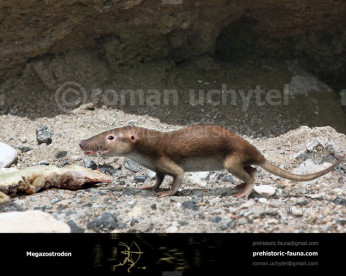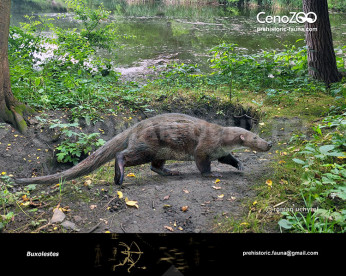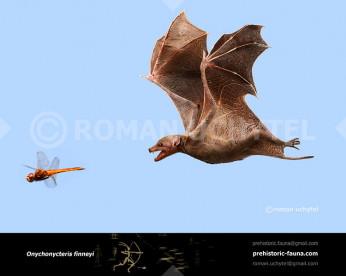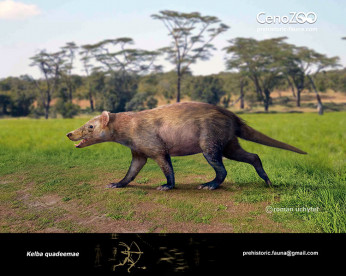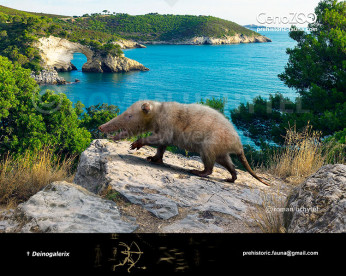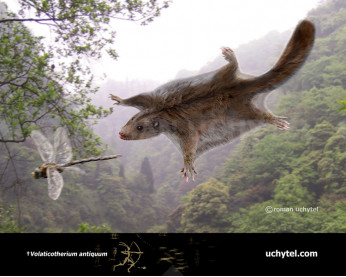Leptictidium tobieni
180180Leptictidium (Leptictidium Tobien, 1962)
Order: Leptictida
Family: Pseudorhyncocyonidae
Dimensions: length - 30 cm, height - 20 сm, weight - 2 kg
Temporal range: Eocene of Europe
A typical representative: Leptictidium auderiense Tobien, 1962
Leptictidium is an extinct genus of small mammals; together with macropods, ground pangolins, and humans, they are the only known completely bipedal mammals. They are especially interesting for their combination of characteristics typical of primitive eutherians with highly specialized adaptations, such as powerful hind legs and a long tail which aided in locomotion. They were omnivorous, their diet a combination of insects, lizards and small mammals. One of the first branches to split from basal eutherians, they appeared in the Lower Eocene, a time of warm temperatures and high humidity, roughly fifty million years ago. Although they were widespread throughout Europe, they became extinct around thirty-five million years ago with no descendants, probably because they were adapted to live in forest ecosystems and were unable to adapt to the open plains of the Oligocene.
It varied between 60 and 90 cm in length (more than half of which belonged to the bald tail), and 20 cm in height. It weighed a couple of kilograms. These sizes could vary from one specimen to another. Perfectly preserved fossils of three different species of Leptictidium have been found in the Messel pit in Germany. The marks on their fur have been preserved, as well as their stomach contents, which reveal Leptictidium were omnivores which fed on insects, lizards and small mammals. The holotype of Leptictidium tobieni also had pieces of leaves and notable amounts of sand in its abdomen, but it cannot be determined with certainty if the animal swallowed it.
Leptictidium (Leptictidium Tobien, 1962)
Order: Leptictida
Family: Pseudorhyncocyonidae
Dimensions: length - 30 cm, height - 20 сm, weight - 2 kg
Temporal range: Eocene of Europe
A typical representative: Leptictidium auderiense Tobien, 1962
Leptictidium is an extinct genus of small mammals; together with macropods, ground pangolins, and humans, they are the only known completely bipedal mammals. They are especially interesting for their combination of characteristics typical of primitive eutherians with highly specialized adaptations, such as powerful hind legs and a long tail which aided in locomotion. They were omnivorous, their diet a combination of insects, lizards and small mammals. One of the first branches to split from basal eutherians, they appeared in the Lower Eocene, a time of warm temperatures and high humidity, roughly fifty million years ago. Although they were widespread throughout Europe, they became extinct around thirty-five million years ago with no descendants, probably because they were adapted to live in forest ecosystems and were unable to adapt to the open plains of the Oligocene.
It varied between 60 and 90 cm in length (more than half of which belonged to the bald tail), and 20 cm in height. It weighed a couple of kilograms. These sizes could vary from one specimen to another. Perfectly preserved fossils of three different species of Leptictidium have been found in the Messel pit in Germany. The marks on their fur have been preserved, as well as their stomach contents, which reveal Leptictidium were omnivores which fed on insects, lizards and small mammals. The holotype of Leptictidium tobieni also had pieces of leaves and notable amounts of sand in its abdomen, but it cannot be determined with certainty if the animal swallowed it.

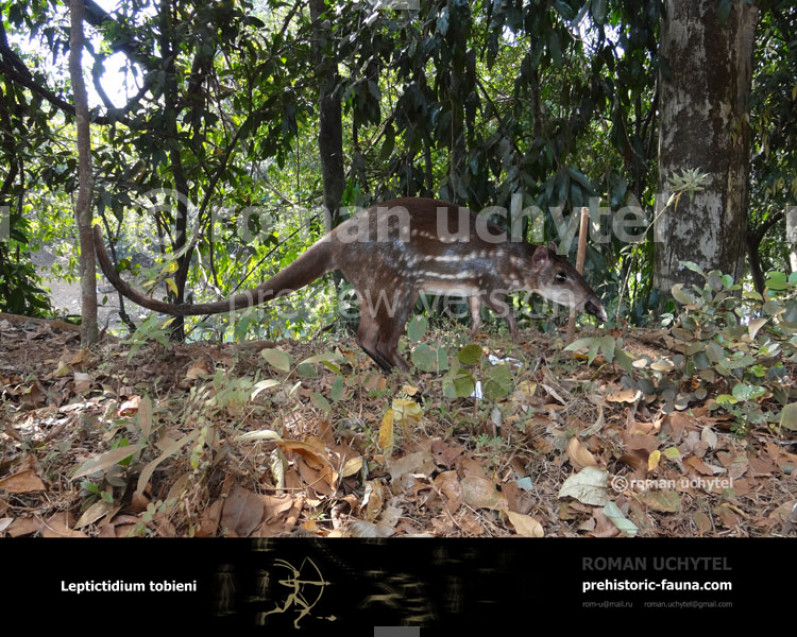
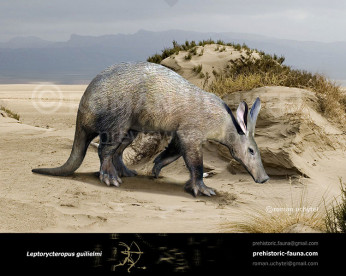
-346x277.jpg)
